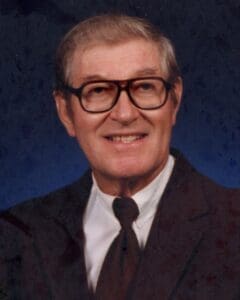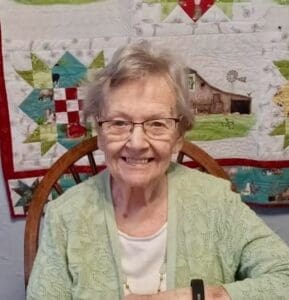Until 1959, residents and visitors of Clay Center could get a bottle of soda for just 5 cents. Made with real sugar, the treat came with 6 ¾ ounces and a glass jar that could be recycled. And, it was bottled fresh in a factory on 5th Street. Anyone who can remember attending on a school field trip got a free soda at the end, a popular highlight, said Terri Parry. It was her grandfather, George Bisenius, Sr., who ran the Coca-Cola Bottling Company after serving during WWI. He served in the Rainbow Division before returning to the area in 1919.
He was also known for his involvement in the local American Legion chapter. Helping to found the Alonzo Dexter Chapter Post 101, George Sr. also served as the first president.
Originally the Clay Center Bottling Works, George Sr. first leased the business in June of 1919, then purchased it later that year. In 1925, he purchased a Coca-Cola franchise and changed the name to the Coca-Cola Bottling Company.

The soda was mixed the old-fashioned way, Parry said. First the bottles were washed and sterilized before syrup and carbonated water were added in by machine. After the bottles were capped, they were then laid over a light to ensure there were no impurities.
Sundays were for mixing the syrup for the entire week, she said, while sugar was stored on big racks then mixed into the syrup. In 1931, George Sr. added to the business by purchasing the state’s first 7UP franchise. Quickly growing the business, the Bottling Company added on a larger building in the ‘30s, which is modern-day Avery Auto Parts at 419 5th St. (The original Bottling Works, a smaller, multi-story building, is no longer standing.) By then the company had six full-time employees.
In 1947 they topped the sales chart for small Coca-Cola franchises. To keep up with growth, a new bottling machine was introduced in 1948, increasing the location’s production time and ability.

Parry said the location also bottled Big Chief sodas, which had fruit flavors; strawberry, black cherry, orange, cream soda, root beer, and grape were all mixed and bottled on-site. They also had a contract for Fresca. The company was also a distributor for Budweiser Anheuser-Busch. Bottles were sold both locally and shipped to other towns.
George Sr., along with his son George Jr., better known as “Speed” or “Speedy,” ran the location for 50 years. Parry said Speed attended one semester at college before his parents needed his help in the factory. However, his work skills in the family plant weren’t where the nickname came from; it was a childhood moniker he earned running up and down a hill.
“They called him that because he was so fast and he went by it his entire life,” she said.
He also worked the plant most of his life, selling only after George Sr. died in 1969. The Bottling Works was shut down and the equipment was sold to a buyer in Bolivia.
Despite growing up in the family soda plant, however, Parry said she didn’t reap the benefits of fresh, on-side soda. Diagnosed with tachycardia, a heart condition triggered by sugar or caffeine, she had to keep soda out of her diet.
What she did get was more Coca-Cola gear than she knew what to do with. She remembers having the soda company-branded items throughout the house, as well as her school items, including branded pencils and paper notebooks.

“Most kids had little red wagons, mine was a Coca-Cola case on wheels,” she said. “It was a lot of Coca-Cola, everything was Coca-Cola, it was a big deal.”
She kept bottles and some items for her kids and grandkids, though she said most of the memorabilia wasn’t considered valuable at the time; the family had seen so much of it.
“Another funny thing, we had burn barrels in the back yard and the lid to ours was a Coca-Cola button sign with a handle welded on the top,” she said. “Those are very collectible now, people would probably cringe to know ours was a fire lid.” (An original, 24” 1950s Coca-Cola button can sell on eBay for more than $900.)
However, the family was well aware of the brand and it’s continued growth, prompting them to purchase stock. They also received shares based off their syrup orders. Each time shares would split, more certificates would come in the mail, she said. A single share from the original company is worth more than 9,200 today. Eventually the Biseniuses went away from paper, though some originals remained in the family’s collectibles.
“I think he was a pretty hard-nosed businessman,” she said of George Sr. However, he wasn’t the only family member with numbers savvy. Her grandmother, Ada, was a decision maker, even though she didn’t work at the plant, Parry said. Ada worked at People’s National Bank and was the first female on the board of directors.

After they had passed, Parry learned they not only kept Coca-Cola stock, but had invested in Pepsi.
“It was kind of interesting to learn they had done that.”
Without cousins and having lost her sister, Parry said she plans to document the history of the Bottling Company in Clay Center, especially her family’s part in the town. She has been researching in retirement and plans to create a pamphlet.
“I’m doing this because I don’t want to lose it and I’m afraid if I don’t do this, it’ll get lost.”













